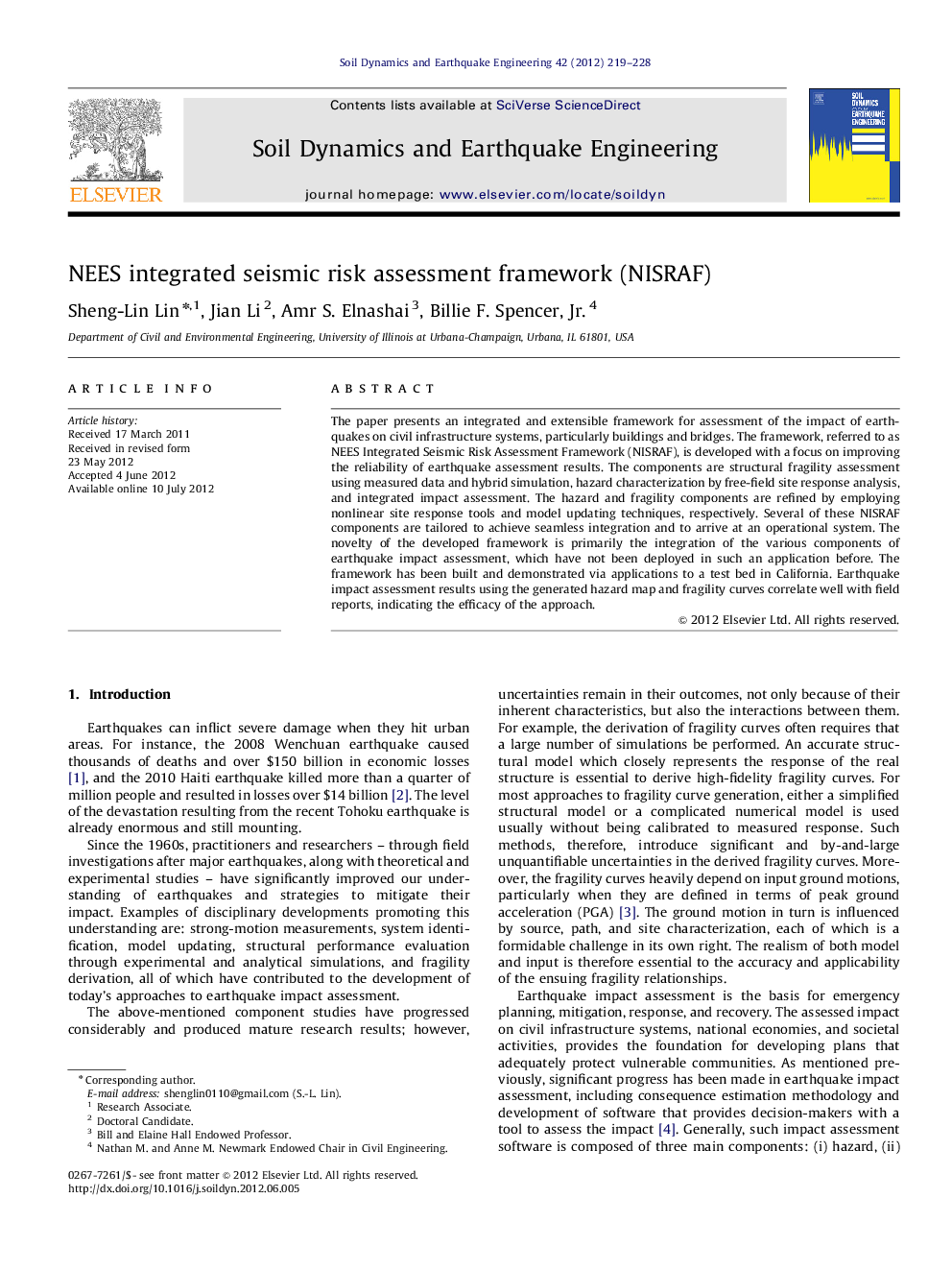| کد مقاله | کد نشریه | سال انتشار | مقاله انگلیسی | نسخه تمام متن |
|---|---|---|---|---|
| 304489 | 512808 | 2012 | 10 صفحه PDF | دانلود رایگان |

The paper presents an integrated and extensible framework for assessment of the impact of earthquakes on civil infrastructure systems, particularly buildings and bridges. The framework, referred to as NEES Integrated Seismic Risk Assessment Framework (NISRAF), is developed with a focus on improving the reliability of earthquake assessment results. The components are structural fragility assessment using measured data and hybrid simulation, hazard characterization by free-field site response analysis, and integrated impact assessment. The hazard and fragility components are refined by employing nonlinear site response tools and model updating techniques, respectively. Several of these NISRAF components are tailored to achieve seamless integration and to arrive at an operational system. The novelty of the developed framework is primarily the integration of the various components of earthquake impact assessment, which have not been deployed in such an application before. The framework has been built and demonstrated via applications to a test bed in California. Earthquake impact assessment results using the generated hazard map and fragility curves correlate well with field reports, indicating the efficacy of the approach.
► We present an integrated and extensible framework for assessment of the impact of earthquakes on structures.
► The objective of the research is to improve the reliability of earthquake impact assessment results.
► Improvements to the hazard characterization and fragility analysis are proposed.
► The framework has been built and demonstrated by application to a test bed in California.
► Earthquake impact assessment results through this framework correlated well with field reports.
Journal: Soil Dynamics and Earthquake Engineering - Volume 42, November 2012, Pages 219–228